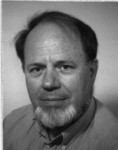Delft University of Technology
IRI, Mekelweg 15
2629 JB Delft, The Netherlands
Phone (0)15 2786559
Fax (0)15 2786422
E-mail: vaneijk@iri.tudelft.nl

| Keynote lecture | |
| "Inorganic scintillators in medical imaging detectors" | |
|
Inorganic scintillators are employed in many medical diagnostic imaging modalities based on X-rays or nuclear radiation. This is explained by the comparatively good detection efficiency of inorganic scintillators for hard radiation. Yet, the various diagnostic methods differ considerably and consequently the radiation detector requirements differ also. These requirements are not always met by the scintillator specifications. This explains the continuous scintillator R&D. After a short discussion of various diagnostic methods, a review is presented of the specifications of the employed scintillators and some recent scintillator research. |
|
| Carel W.E. van Eijk Delft University of Technology IRI, Mekelweg 15 2629 JB Delft, The Netherlands Phone (0)15 2786559 Fax (0)15 2786422 E-mail: vaneijk@iri.tudelft.nl |
 |
| Carel van Eijk is Professor of Applied Physics at the Delft University of Technology, The Netherlands. He started as an experimental nuclear physicist but changed his research interest in the direction of radiation detection and instrumentation. At first applications were mainly in the field of intermediate energy physics. He was involved in experiments on pi-mu physics (wire chambers and drift chambers), anti-protonic X-rays (gas scintillation) and CP and T breaking (automatic beam control system) at CERN and on muon catalysed fusion at RAL, UK (data handling and analysis) and Dubna (simulation studies). In parallel silicon-sensor development and fundamental research on inorganic scintillators and storage phosphors was started, and applications in fields like X-ray diffraction, thermal-neutron detection, dosimetry, medical imaging, and, more recently, demining stirred his interest. He has authored and co-authored many papers related to these subjects and is co-discoverer of a number of new scintillators. He is head of a research group with 30 people at the Delft University. | |
| Keynote lecture | |
| "Advances in Germanium Detector Technology For Imaging" | |
|
High-purity germanium (HPGe) detectors have always been attractive for imaging because of their good energy resolution and high absolute efficiency for high-energy photons (> 100 keV). In the past, however, various difficulties such as the availability of sufficient size material, device processing techniques, complex signal processing electronics and algorithms had rendered HPGe detectors impractical. In recent years, significant advances have been made in the areas of HPGe crystal material, HPGe detector processing technology, high-speed electronics and software algorithm. These technological progresses are allowing further exploitation of the unique signal generation properties of large volume HPGe detectors and, thus, are re-introducing HPGe detectors into the realm of imaging in a very new and exciting way. Some of these advances in HPGe crystal growth and HPGe detector processing technology along with the two basic detector design concepts and their imaging potentials will be discussed. |
|
| Dr Pat Sangsingkeow ORTEC-Advanced Measurement Technology 801 South Illinois Avenue, Oak Ridge, Tennessee 37831-0895, USA Tel: US + 865.481.2416 Mobile: US + 865.388.4573 Fax: US + 865.481.2438 pat.sangsingkeow@ortec-online.com |
 |
| Pat Sangsingkeow graduated from the University of North Texas in the field of Atomic and Nuclear Physics. During the past 20 years she has been involved in the research, development, design and fabrication of Silicon and Germanium detectors and in high-purity germanium crystal growth technology. She has authored and co-authored several technical publications related to X-ray, gamma-ray and charged particle spectroscopy. She received two patents for designs related to segmented germanium detectors. She is currently Head of Department of Detectors For Research at ORTEC-Advanced Measurement Technology, USA, and leads their Structure Research Detector team, designing and developing state-of-the-art detectors for use in various pioneering research activities such as Atomic Structure research, Nuclear Structure research, Synchrotron science, Space exploration, Dark Matter and Neutrino studies, and Imaging. | |
| This page last updated: 08-July-2002 | webmaster: dbello@nikhef.nl |